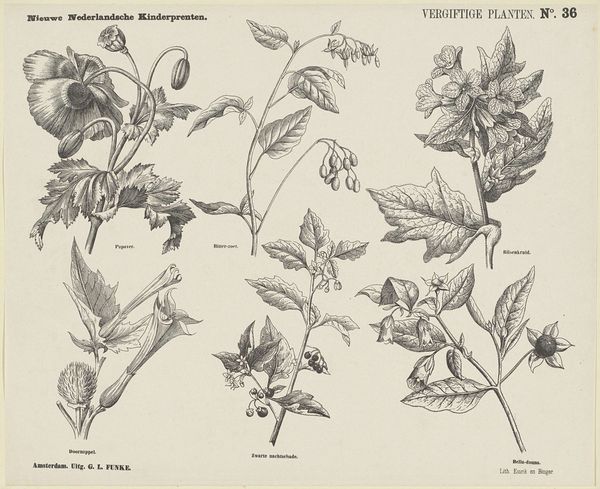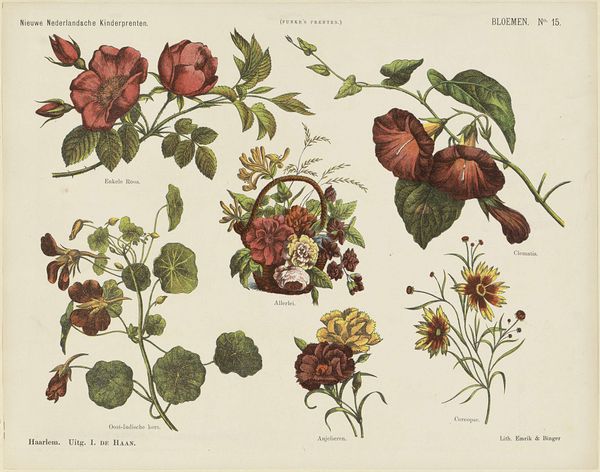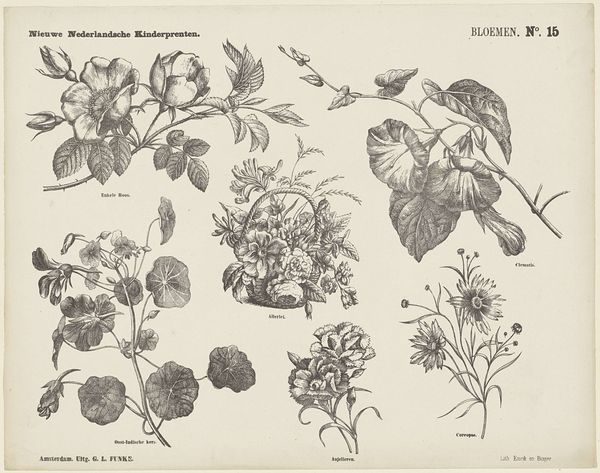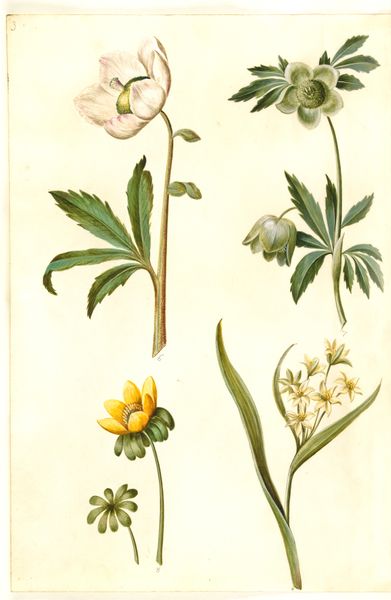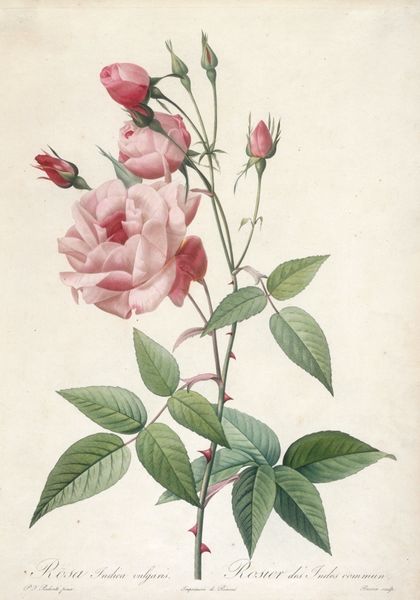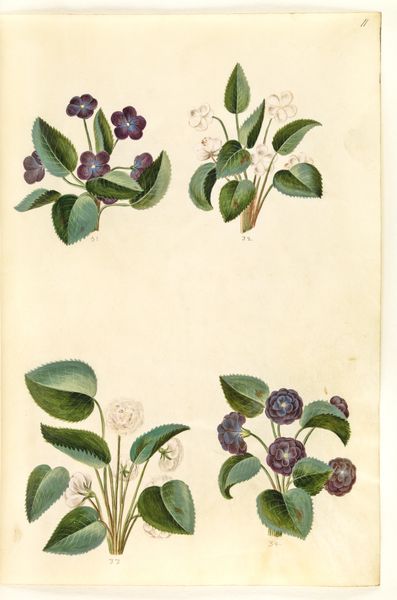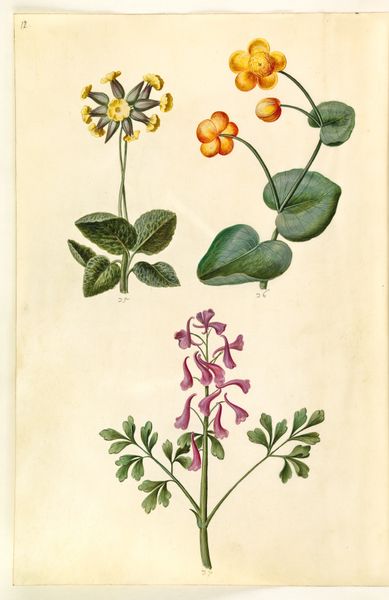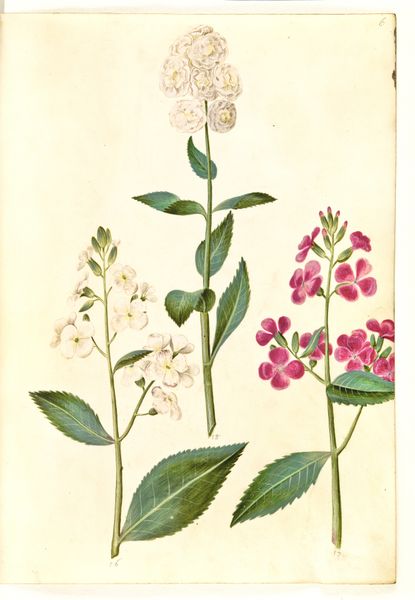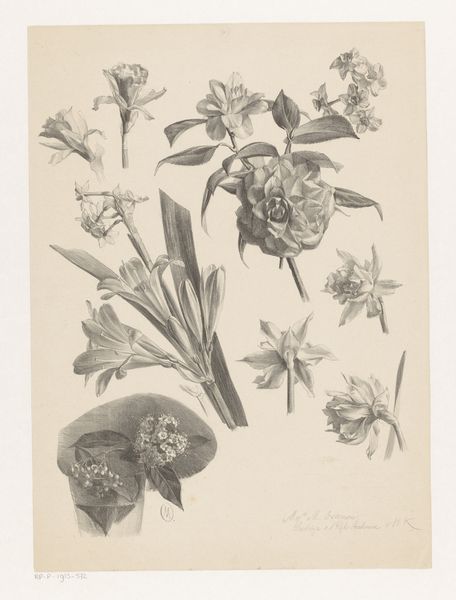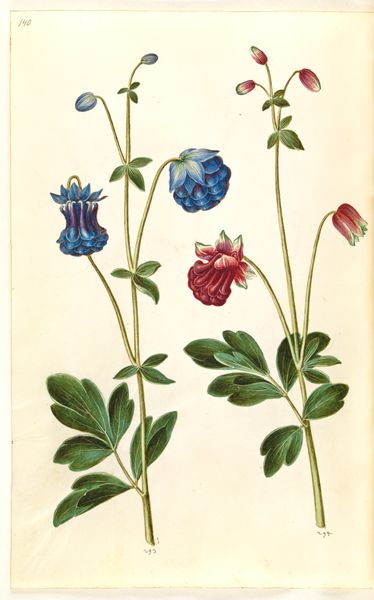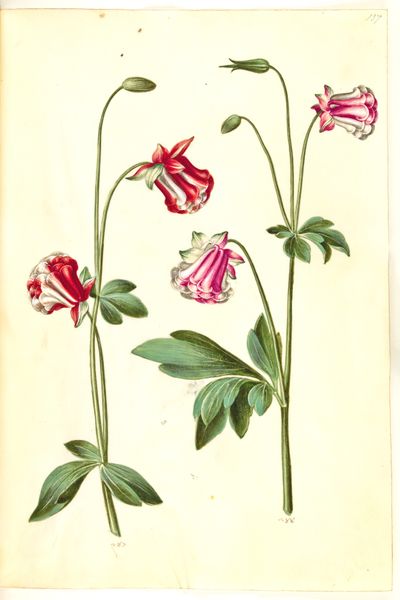
drawing, print
#
drawing
# print
#
line
#
naturalism
#
botanical art
Dimensions: height 341 mm, width 425 mm
Copyright: Rijks Museum: Open Domain
Curator: This print immediately evokes something almost Victorian, like a page from a particularly dark children’s book of cautionary tales! It's intriguing, but has a somewhat ominous tone. Editor: Indeed! This is entitled "Vergiftige planten," or "Poisonous Plants," part of the series *Nieuwe Nederlandsche Kinderprenten,* “New Dutch Children’s Prints”. Created between 1875 and 1903, the artist is Jan de Haan, a Dutch illustrator producing prints and drawings with a strong emphasis on naturalism. This work employs the medium of print to convey these botanical studies. Curator: I notice each plant is labeled; it really does have the feel of a botanical field guide. The details are quite striking, capturing all of the textures, down to the delicate veining on the leaves. Do you think it's trying to be scientifically accurate? Editor: That’s a perceptive observation. Naturalism as an artistic movement coincided with great advances in scientific illustration, aiming for precise visual documentation. But remember that these prints were for children, distributed as children’s gifts or pasted in school books as rewards, so in that light we have to read their potential pedagogical function as being as significant as their aesthetic function. Curator: Pedagogical? Is that a fancy way of saying this image can teach? Editor: Well yes! The print teaches caution and awareness of dangerous plants through the then common mode of "prenten", meaning print. These are part educational resource and also a commentary on societal values through depictions of "nature". Look closer, you see a dark poppy and belladonna, traditionally associated with danger, alongside henbane—each plant depicted as beautiful yet bearing a covert threat. Curator: The fact they’re beautiful makes them even more menacing—something harmless hiding danger. What a concept to be conveying to children! It does provoke thought about how we shape our perception of our environment, and what we want to pass on to our youth. Editor: Absolutely, these prints served as both art and instruction, reflecting a desire to imbue children with knowledge, curiosity, and even a healthy sense of caution towards the natural world around them, within its period socio-political context.
Comments
No comments
Be the first to comment and join the conversation on the ultimate creative platform.
